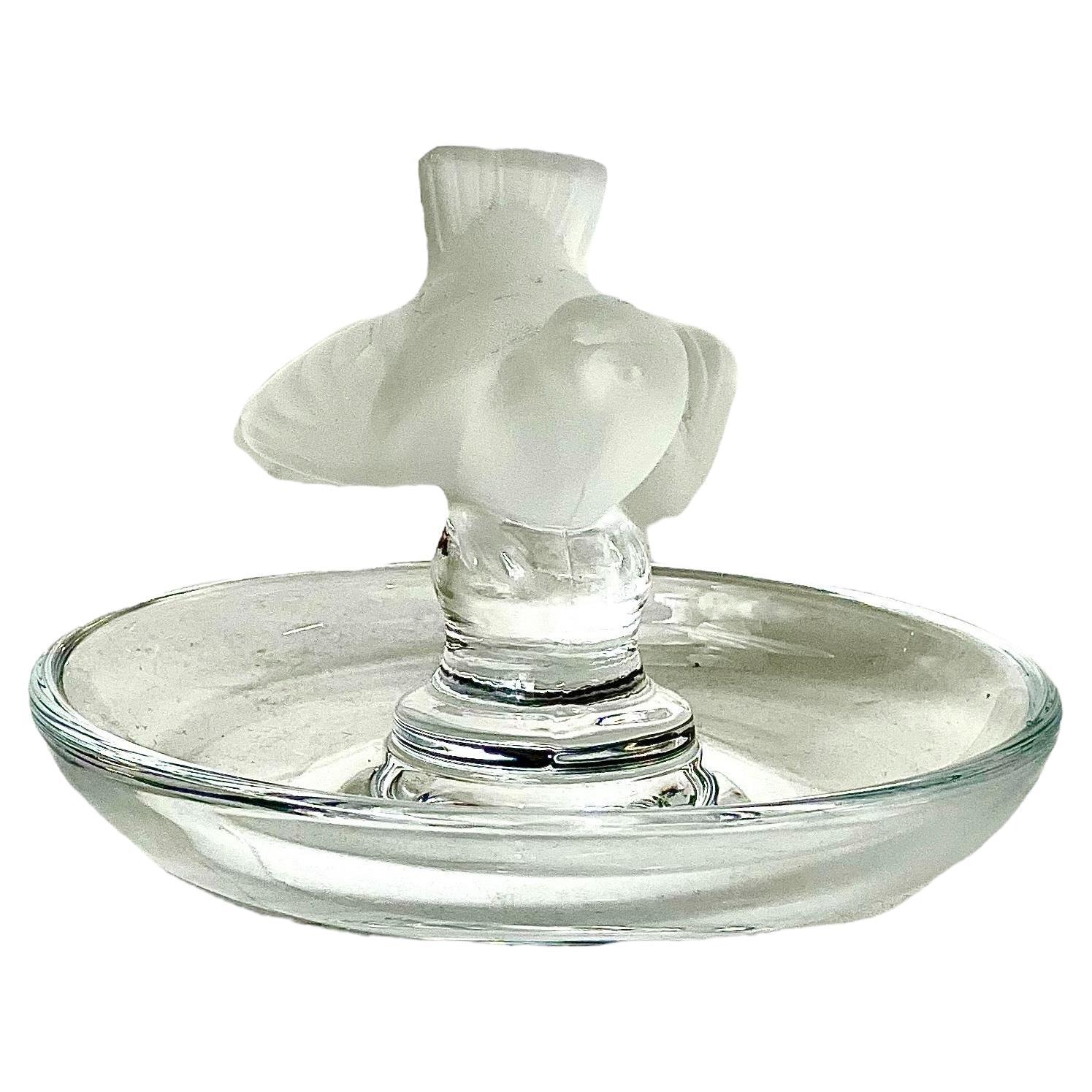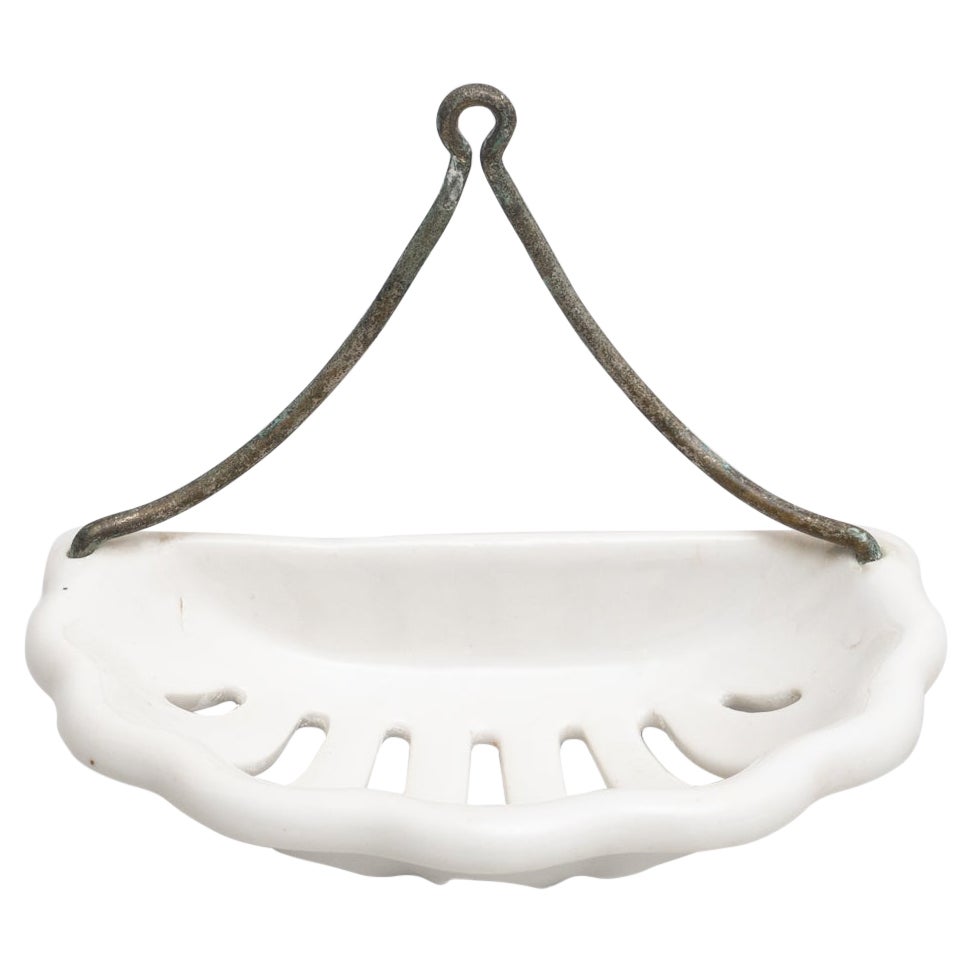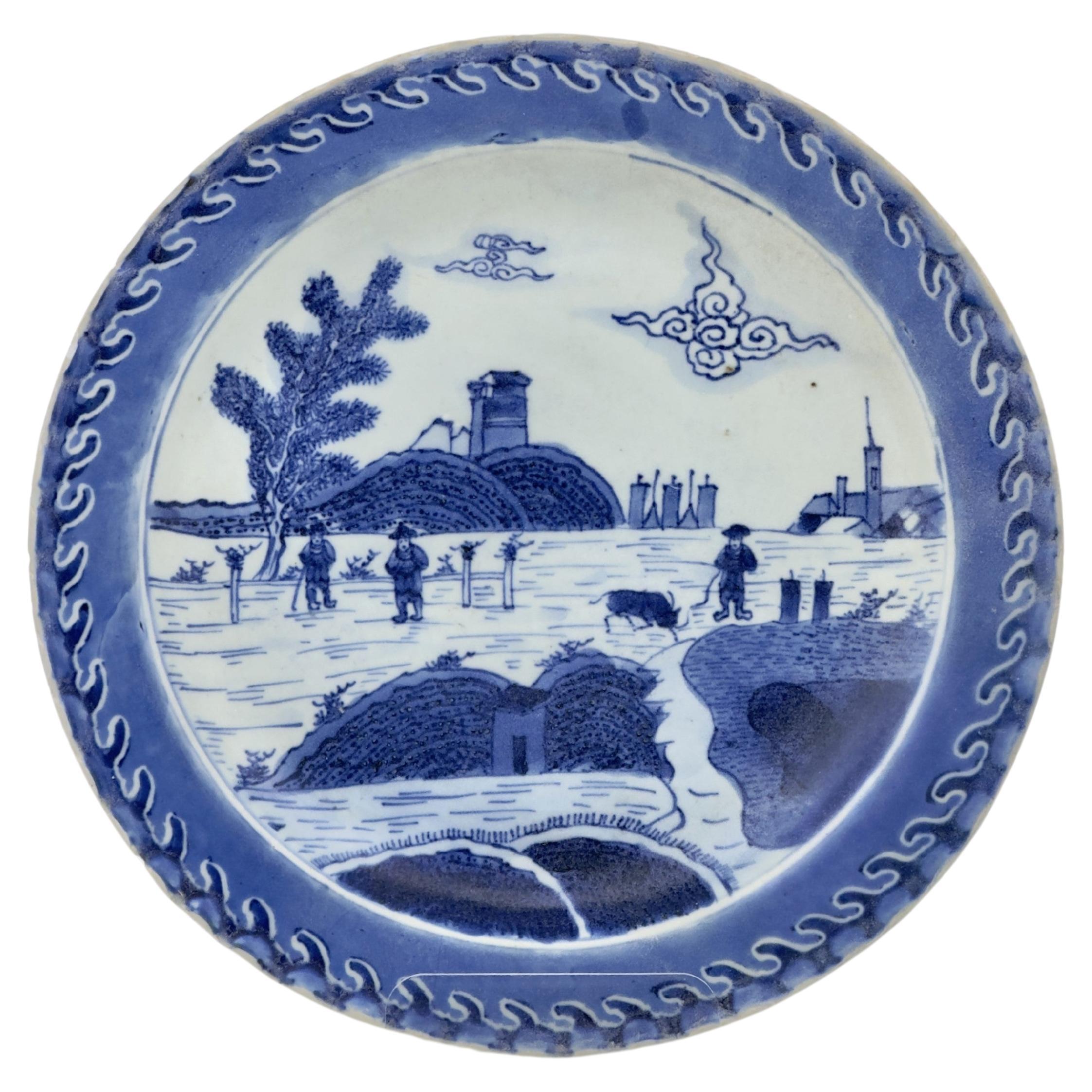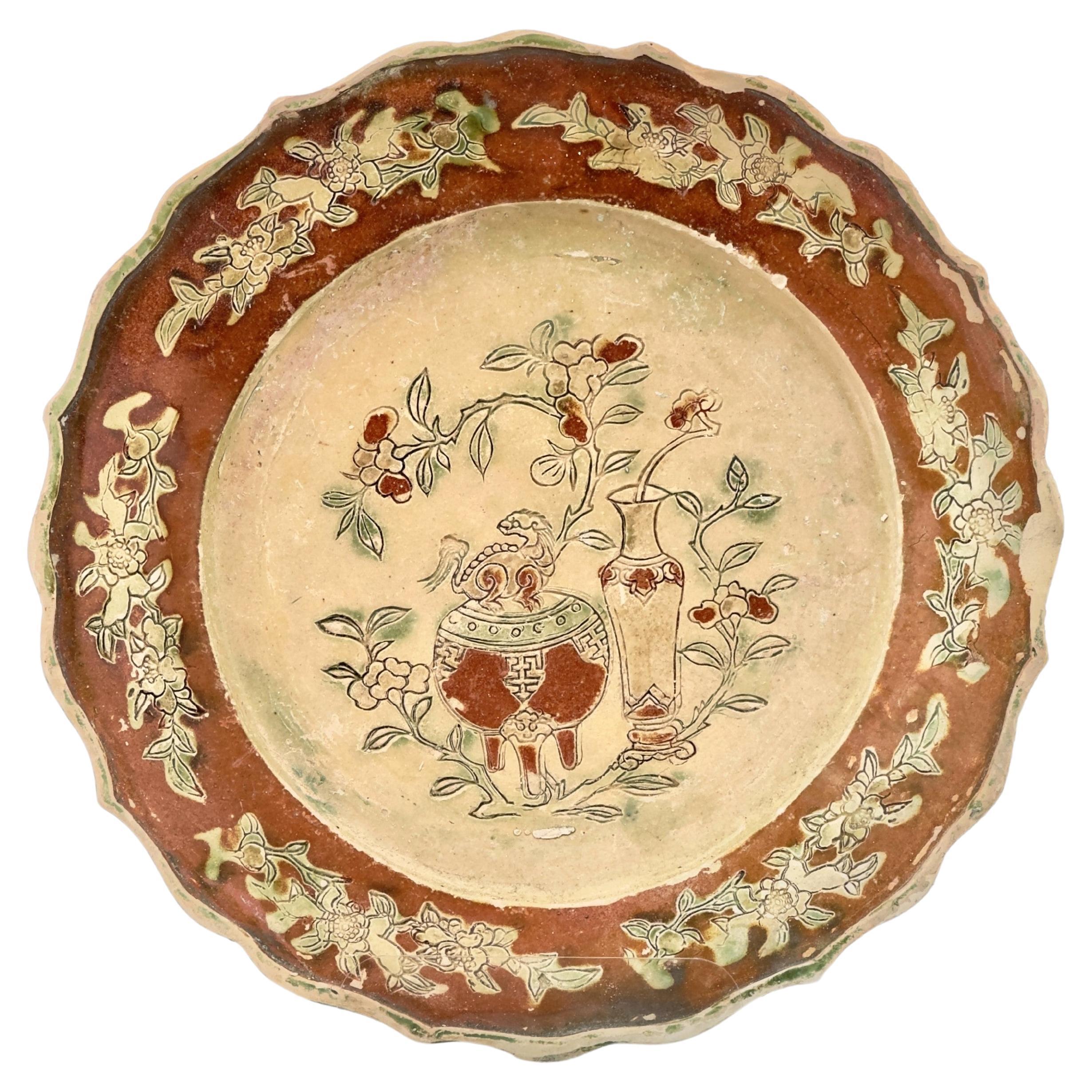Items Similar to Small Longquan Celadon 'Twin Fish' Dish, Southern Song Dynasty
Want more images or videos?
Request additional images or videos from the seller
Small Longquan Celadon 'Twin Fish' Dish, Southern Song Dynasty
About the Item
The "twin fish" dishes, emblematic of fertility and marital joy, are also recognized as one of the Eight Buddhist symbols. These dishes were prominently produced by the Longquan kilns during the transition from the late Southern Song to the early Ming period. Such dishes have been found in the Longquan area's Southern Song kiln sites, for example, the bowl discovered at Jincun, which is depicted in "Longquan Qingci Yanjiu". Additional specimens can be found in major collections, including the National Palace Museum in Taipei, as detailed in the "Illustrated Catalogue of Sung Dynasty Porcelain in the National Palace Museum: Lung-chu'än Ware, Ko Ware and other Wares", and at the Percival David Foundation, documented in "Illustrated Catalogue of Celadon Wares"
Period : Southern Song Dynasty - Yuan Dynasty
Type : Celadon
Medium : Longquan ware
Size : 4.5 cm(Height) 21cm(Diameter)
Provenance : Acquired in early 2000s from South East Asian gallery
Reference :
1) Sotheby's Paris 18 April 2023 - Asian Arts / 5000 Years - lot137
(Price : 44,450 Euro / Type : Closely related)
2) Christies Newyork 21–22 SEP 2023 - Important Chinese Ceramics and Works of Art - lot 1017
(Price : 9,450 USD / Type : Closely related)
* Song Dynasty Longquan Celadon
Longquan celadon refers to a type of Chinese ceramic that was famous for its distinctive glaze and high-quality craftsmanship, primarily produced during the Song Dynasty (960–1279 AD). These ceramics were made in the Longquan region of the Zhejiang province in eastern China, an area rich in the clay and mineral resources necessary for ceramic production.
The most notable characteristic of Longquan celadon is its glaze, which ranges in color from a pale blue-green to a deep olive green. This unique color comes from the iron oxide in the glaze, which, when fired in a reducing kiln atmosphere, produces the green hue. The thickness of the glaze, as well as the firing conditions, could affect the final shade and appearance of the celadon, with some pieces exhibiting a more crackled texture and others a smoother, glossier finish.
Longquan celadons were highly prized for their beauty and durability, making them popular both domestically within China and internationally. They were exported widely, reaching as far as Southeast Asia, the Middle East, and Africa, where they were often considered luxury items and treasured by various cultures.
The designs of Longquan celadon wares varied from simple and elegant forms to more elaborate decorations, including carved or incised motifs inspired by nature, such as lotus flowers, phoenixes, dragons, and foliage. Despite the variations in decoration, the emphasis was always on the harmony between form, glaze, and decoration, with the glaze playing a crucial role in enhancing the overall aesthetic appeal of the piece.
During the Song Dynasty, Longquan celadon was one of several major types of ceramics produced in China, each with its own distinctive characteristics. However, the quality and beauty of Longquan celadon made it one of the era's most celebrated ceramic types, and it continues to be highly valued by collectors and scholars today.
About the Seller
New to 1stDibs
Joined in the past six months.
4.5
Vetted Seller
These experienced sellers undergo a comprehensive evaluation by our team of in-house experts.
Established in 1999
1stDibs seller since 2023
Typical response time: <1 hour
- ShippingRetrieving quote...Ships From: seoul, Korea South
- Return PolicyA return for this item may be initiated within 10 days of delivery.
Auctions on 1stDibs
Our timed auctions are an opportunity to bid on extraordinary design. We do not charge a Buyer's Premium and shipping is facilitated by 1stDibs and/or the seller. Plus, all auction purchases are covered by our comprehensive Buyer Protection. Learn More
More From This SellerView All
- A Longquan Celadon-Glazed 'Dragon' Dish, Yuan DynastyLocated in seoul, KRThe dish is decorated to the centre with a moulded appliqué dragon chasing the flaming pearl surrounded by a carved stylised foliage band at the cavetto. The moulded fluted exterior ...Category
Antique 15th Century and Earlier Chinese Ming Antiquities
MaterialsCeladon
- Carved 'Longquan' Celadon-glazed Funerary vase and cover, Song dynastyLocated in seoul, KRThe vase features a ribbed body, subtly enhancing its graceful contours, and is topped with a uniquely sculpted lid adorned with figurative elements. Period : Song Dynasty Type : Ce...Category
Antique 15th Century and Earlier Chinese Ming Antiquities
MaterialsCeladon
- Longquan Celadon 'Dragon' Jar and Cover, Song Dynasty(1127–1279)Located in seoul, KRA similar jar with a cover, part of the Avery Brundage collection at the Asian Art Museum in San Francisco, is featured in Mary Tregear's "Song Ceramics" (London, 1982, plate 286). T...Category
Antique 15th Century and Earlier Chinese Ming Antiquities
MaterialsCeladon
- A Molded Qingbai 'Flowers' Dish, Southern Song DynastyLocated in seoul, KRThe plate depicted here exhibits the intricate floral patterns and lotus motifs that are typical of Southern Song designs. The central floral motif captures the essence of Oriental b...Category
Antique 15th Century and Earlier Chinese Ming Antiquities
MaterialsCeramic
- Small Celadon Chrysanthemum Dish, Northern Song Dynasty(AD 960~1127)Located in seoul, KRPotted with the fluted sides rising from a recessed base, carved to the interior with Chrysanthemum, covered overall with a grayish-green glaze, save for a ring to the underside left...Category
Antique 15th Century and Earlier Chinese Ming Antiquities
MaterialsCeladon
- Longquan Celadon Five-Spouted Jar, Northern Song Dynasty (AD 960~1127)Located in seoul, KRThickly potted with an ovoid body of five horizontal lobes tapering toward the top, carries both aesthetic and practical values. The jar is intricately carved with rows of upright lo...Category
Antique 15th Century and Earlier Chinese Ming Antiquities
MaterialsCeladon
You May Also Like
- Ming Dynasty Longquan Celadon Dish with Geometric Design, 15th CenturyLocated in Austin, TXA heavily potted and richly glazed celadon dish, Longquan kilns, early Ming Dynasty, mid 15th century, China. The large dish glazed in a deep olive cela...Category
Antique 15th Century and Earlier Chinese Ming Ceramics
MaterialsCeramic
- Chinese Ming Dynasty Longquan Celadon Peony Deep Dish, 14th-15th CenturyLocated in Austin, TXA beautiful Chinese celadon glazed deep dish with an impressed peony design to the center, Ming Dynasty, circa 1400, Longquan kilns, China. The lovey dish covered in an attractive ...Category
Antique 15th Century and Earlier Chinese Ming Ceramics
MaterialsPorcelain
- Glazed Earthenware Bowl, Song Dynasty, ChinaLocated in Los Angeles, CASong dynasty period earthenware glazed bowl Gorgeous patina and wear. Overall excellent condition. Height: 2.7" Diameter: 6.5"Category
Antique 15th Century and Earlier Chinese Chinese Export Decorative Bowls
MaterialsEarthenware
- Chinese Longquan Style Celadon VaseLocated in Rio Vista, CALarge, Chinese Longquan style celadon vase with a stunning lotus leaf pattern underglaze and Greek key detail on the perimeter of t...Category
20th Century Chinese Ming Ceramics
MaterialsPorcelain
- Celadon Ceramic Tea Bowl Korean Goryeo DynastyLocated in Atlanta, GAAn antique Korean ceramic tea bowl with celadon glaze from Goryeo dynasty, circa 12th century. The thin-walled stoneware bowl was potted delicately with...Category
Antique 15th Century and Earlier Korean Archaistic Ceramics
MaterialsCeramic
- Meiji Dynasty Japanese Decorative DishLocated in Milano, ITRound plate in bronze and cloissoné enamel designed in Japan at the end of the 19th century, during the 'Meiji' era, which can be translated as 'enlightened government'. This histori...Category
Antique Early 1900s Japanese Anglo-Japanese Antiquities
MaterialsBronze





